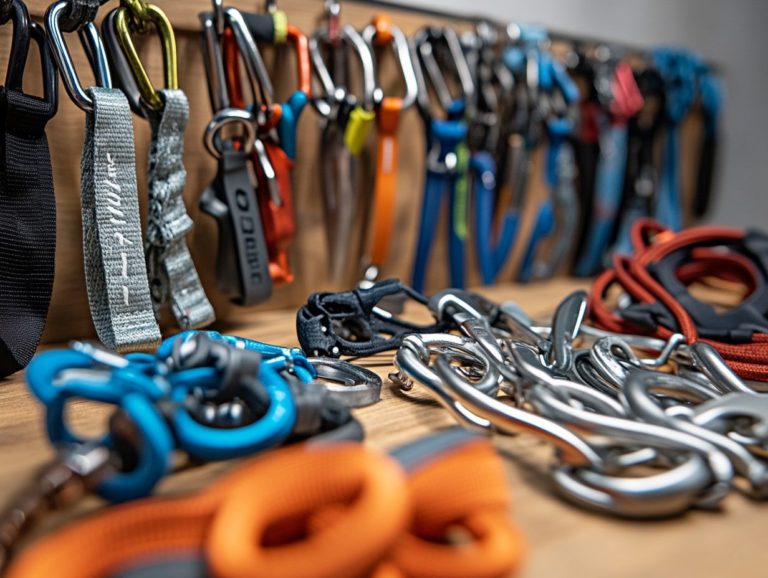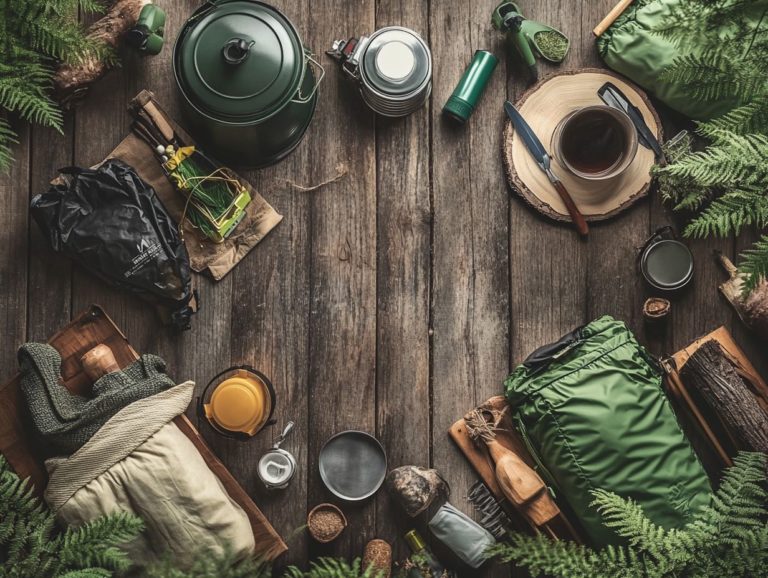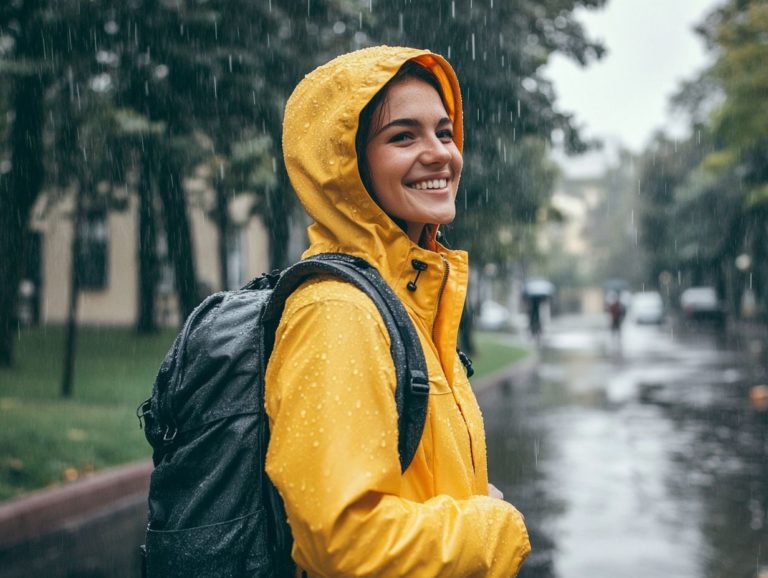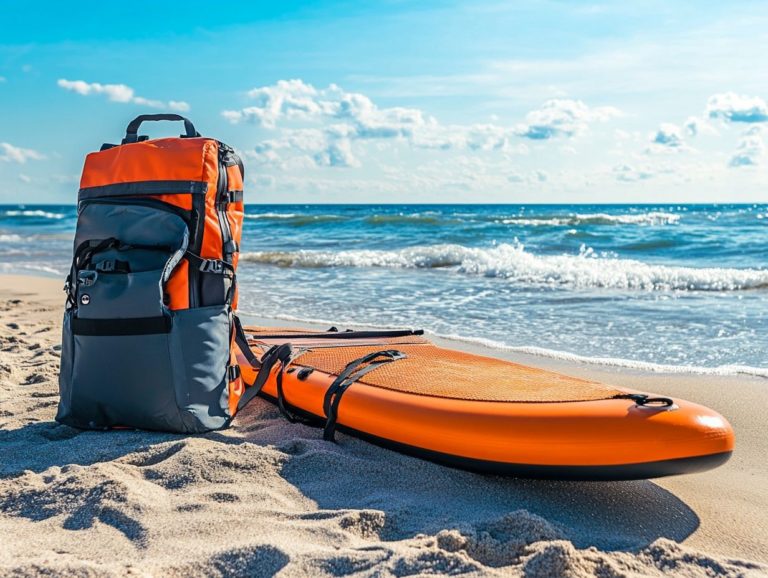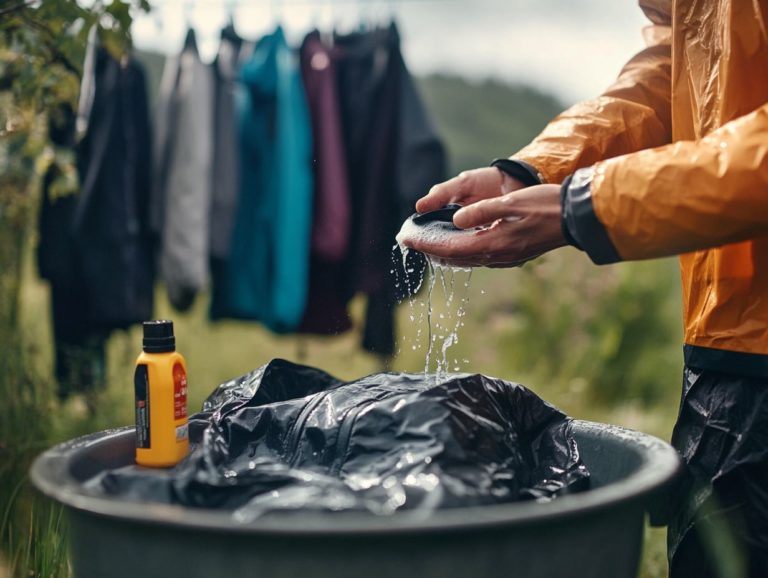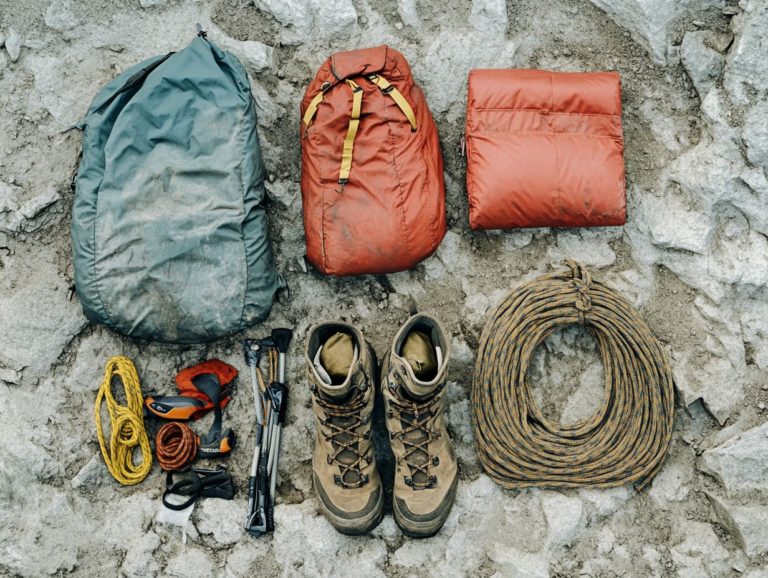What are the Different Types of Climbing Gear?
Climbing is an exhilarating pursuit that requires not only skill and determination but also the right gear. Whether you re scaling rocky cliffs or navigating icy terrains, having the proper equipment is vital for safety and performance.
The array of climbing gear can feel overwhelming. Ropes, harnesses, crampons, and ice axes are just the beginning. This article will simplify your journey by breaking down the essential equipment for various climbing styles, highlighting key considerations for your selection, and guiding you in making informed choices for your next adventure.
Contents
- Key Takeaways:
- What is Climbing Gear?
- Essential Gear for Rock Climbing
- Important Gear for Ice Climbing
- Other Types of Climbing Gear
- Considerations When Choosing Climbing Gear
- Frequently Asked Questions
- What Are the Different Types of Climbing Gear?
- What is a climbing rope and what are its different types?
- What is a climbing harness and how do I choose the right one?
- Why is a helmet important for climbing?
- What Are Quickdraws? Discover Their Purpose and Use!
- What Are the Different Types of Climbing Shoes?
- What Other Gear Do I Need for Climbing?
Key Takeaways:
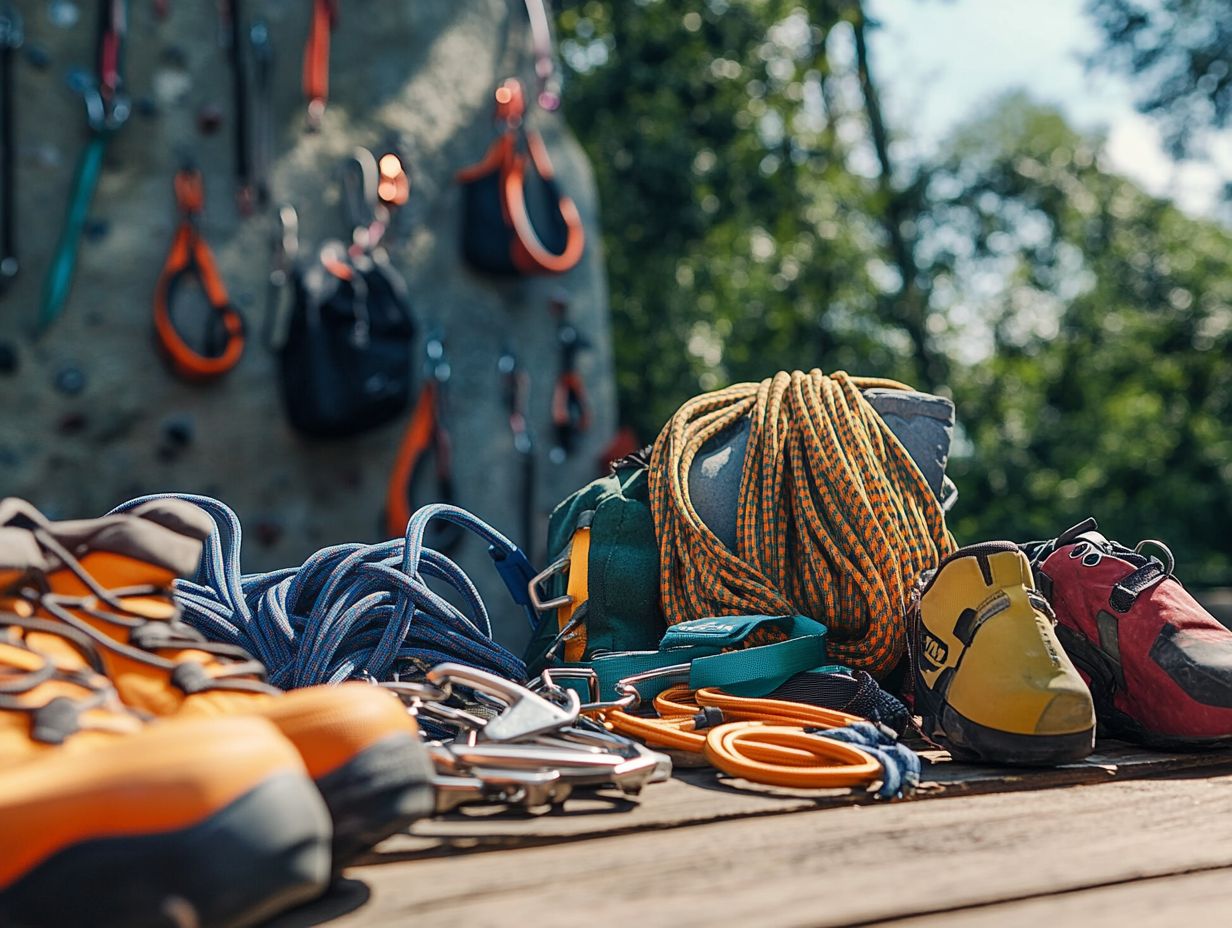
- Climbing gear is essential for both rock and ice climbing, and varies depending on the type of climbing.
- Ropes, harnesses, shoes, and chalk bags are necessary for rock climbing, while ice axes and crampons are crucial for ice climbing.
- Bouldering and mountaineering also require specialized gear. Climbers should consider factors such as safety, comfort, and durability when choosing gear.
What is Climbing Gear?
Climbing gear includes a range of equipment and accessories for various climbing activities. Essential items like climbing shoes, harnesses, and belay devices are crucial for safety and performance at any skill level.
With cutting-edge products from renowned brands such as Edelrid, Black Diamond, and Petzl, you can find specialized gear tailored to your specific needs. Whether you re scaling a granite face or tackling a bouldering problem, the right climbing gear not only elevates your experience but also prioritizes your safety in the vertical world.
Essential Gear for Rock Climbing
For rock climbing enthusiasts like yourself, having the right gear is essential to ensure a safe and enjoyable experience. This means investing in climbing shoes that provide optimal grip, a reliable harness to keep you secure, and durable climbing ropes that can handle the rigors of your ascent.
Don t overlook the importance of belay devices, which help control rope tension, and quickdraws, as they are vital for managing falls. A climbing helmet is equally crucial for head protection, especially in areas where falling debris could be a concern.
Choosing high-quality equipment from trusted brands like La Sportiva, Edelrid, and Black Diamond significantly enhances your climbing adventures.
Ropes and Harnesses
Ropes and harnesses are essential components of your climbing gear, providing the necessary safety and security you need on various terrains.
As a sports enthusiast, it’s crucial for you to be familiar with two primary types of climbing ropes: dynamic and static. Dynamic ropes are designed to stretch under load, making them critical for activities like lead climbing, as they help minimize the impact of falls. Static ropes, on the other hand, don t stretch and are perfect for rappelling and rigging.
Harnesses play a pivotal role in securely holding you, ensuring an even distribution of forces in case of a fall. Using the appropriate belay devices, which manage rope tension and control your speed during descent, is critical for maximizing your safety. Quality equipment is paramount inferior gear can lead to serious accidents, underscoring the importance of diligent gear checks and adherence to best safety practices.
By understanding these elements, you can better prepare for your adventures, enhancing both your enjoyment and safety as you pursue your climbing goals. Your climbing adventures await! Equip yourself with the best gear to safely tackle heights and enjoy every moment of your journey.
Shoes and Chalk
Climbing shoes and chalk are essential for enhancing your grip and performance on the rock face. The right pair of climbing shoes should fit snugly, giving you great feel and traction.
A chalk bag is key for keeping your hands dry, allowing for a firmer grip.
Incorporating strength training into your routine can further improve your climbing skills, working well with your gear. Climbing tape, a special tape to protect your hands, is critical for safeguarding during lengthy climbs or bouldering sessions.
Selecting the right footwear tailored to your specific climbing style can significantly impact your performance, whether you re into sport climbing, trad climbing, or bouldering. A well-fitted shoe enhances your precision on footholds, while the right type of chalk absorbs moisture to reduce slippage.
Strength training builds the necessary muscles for those demanding climbs, allowing you to tackle more challenging routes with ease. Utilizing climbing tape not only safeguards your fingers from abrasions but also supports your joints during strenuous efforts, helping to prolong your endurance and enjoyment on the rock.
Important Gear for Ice Climbing
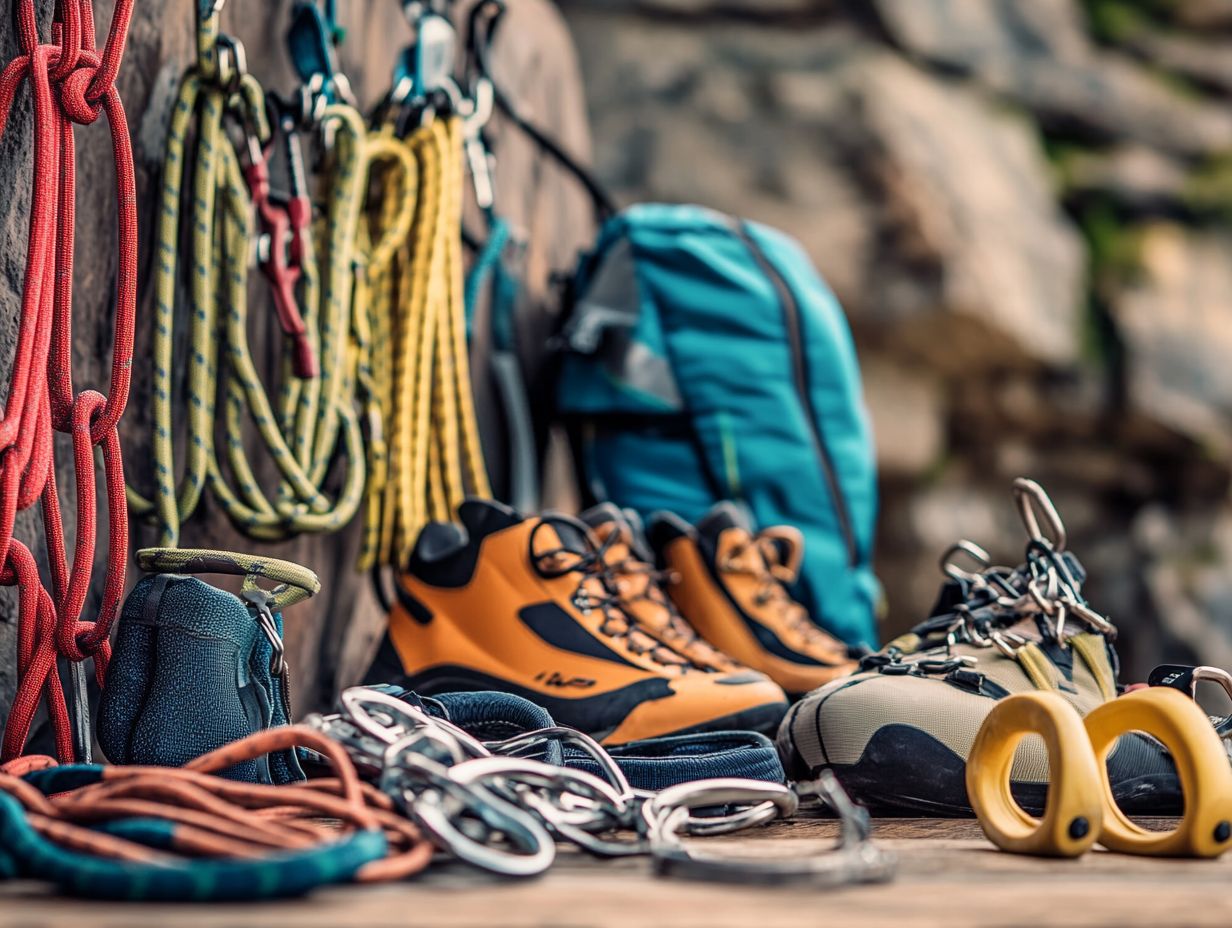
In the demanding world of ice climbing, possessing the right gear is crucial for both your safety and efficiency. Crampons offer you the traction needed on icy surfaces, while ice axes serve as vital tools for climbing and self-arresting in case of falls.
A proper climbing helmet shields you from falling ice and debris, providing an extra layer of protection. A well-fitted harness is equally important, allowing you to move with ease while ensuring a secure attachment to the rope.
Choosing high-quality gear from trusted brands like Black Diamond, Petzl, and Patagonia boosts your performance and safety on the ice.
Crampons and Ice Axes
Crampons and ice axes are essential tools for your ice climbing adventures, giving you the power to navigate frozen terrain with confidence and safety.
You’ll find a variety of crampons tailored to different climbing styles. For example, mountaineering crampons are typically lighter and more versatile, while heavier crampons meant for tough climbs are specifically designed for steep, mixed ice conditions.
Ice axes also come in several forms some are lightweight and ideal for general use, while others are sturdier, equipped with features that cater to more challenging climbs.
To maximize your effectiveness with these tools, it’s important to practice proper techniques for placement and retrieval in varying conditions. Regular maintenance, including cleaning and sharpening, is key to ensuring peak performance and safety.
Inspect your gear regularly to avoid dangerous accidents safety is your top priority!
Clothing and Protection
Proper clothing and protection, alongside essential gear like climbing tape, are absolutely essential for ice climbing, where temperatures can drop dramatically and conditions can shift in the blink of an eye.
Layering is key to staying comfortable. It lets you adapt quickly to changing temperatures and maintain optimal body heat. Materials like fleece are great for insulation, providing lightweight warmth, while specialized fabrics such as Gore-Tex in your outer layers ensure you stay dry and shielded from the wind.
While having the right clothing is crucial, don t underestimate the importance of protective gear. A well-fitted climbing helmet is your first line of defense against falling ice and unexpected impacts.
This thoughtful combination of strategic layering and robust protective gear not only enhances your comfort but also significantly boosts your safety, giving you the power to navigate icy terrains with confidence.
Other Types of Climbing Gear
Beyond traditional rock and ice climbing, you’ll discover specialized gear designed specifically for bouldering and mountaineering.
For bouldering, investing in crash pads is essential. They cushion your falls and provide a safe landing zone, allowing you to push your limits with confidence.
In mountaineering, you ll need a versatile array of equipment, including climbing tape for quick gear repairs and securing essentials during your ascents. Grasping the unique requirements of these climbing styles is vital for any climber eager to improve their skills and enhance their safety practices.
Bouldering Gear
When diving into bouldering, the right gear is your best ally, emphasizing safety and performance without the need for ropes. You’ll want to equip yourself with essential items like:
- climbing shoes for that all-important grip and precision,
- crash pads to cushion those inevitable falls,
- climbing tape to safeguard your hands and gear.
Investing in high-quality bouldering gear enhances your climbing experience and allows you to tackle challenges with confidence and safety. Mastering the effective use of each piece is crucial for maximizing your performance and minimizing injury.
Choosing the right climbing shoes is especially critical as they directly impact your grip and foot placements on various holds. Consider fit, stiffness, and rubber type; a snug fit heightens sensitivity, while stiffer shoes offer better support for steep problems.
Crash pads act as your safety net against falls. Selecting one that balances portability with adequate cushioning can significantly enhance your practice sessions. Don’t underestimate climbing tape it s a small but mighty tool for preventing skin tears and providing extra grip. Knowing when and how to use it can greatly contribute to your climbing success.
Altogether, these pieces of gear are critical in promoting both safety and performance in the challenging world of bouldering, especially when considering the best gear for solo climbers.
Mountaineering Gear
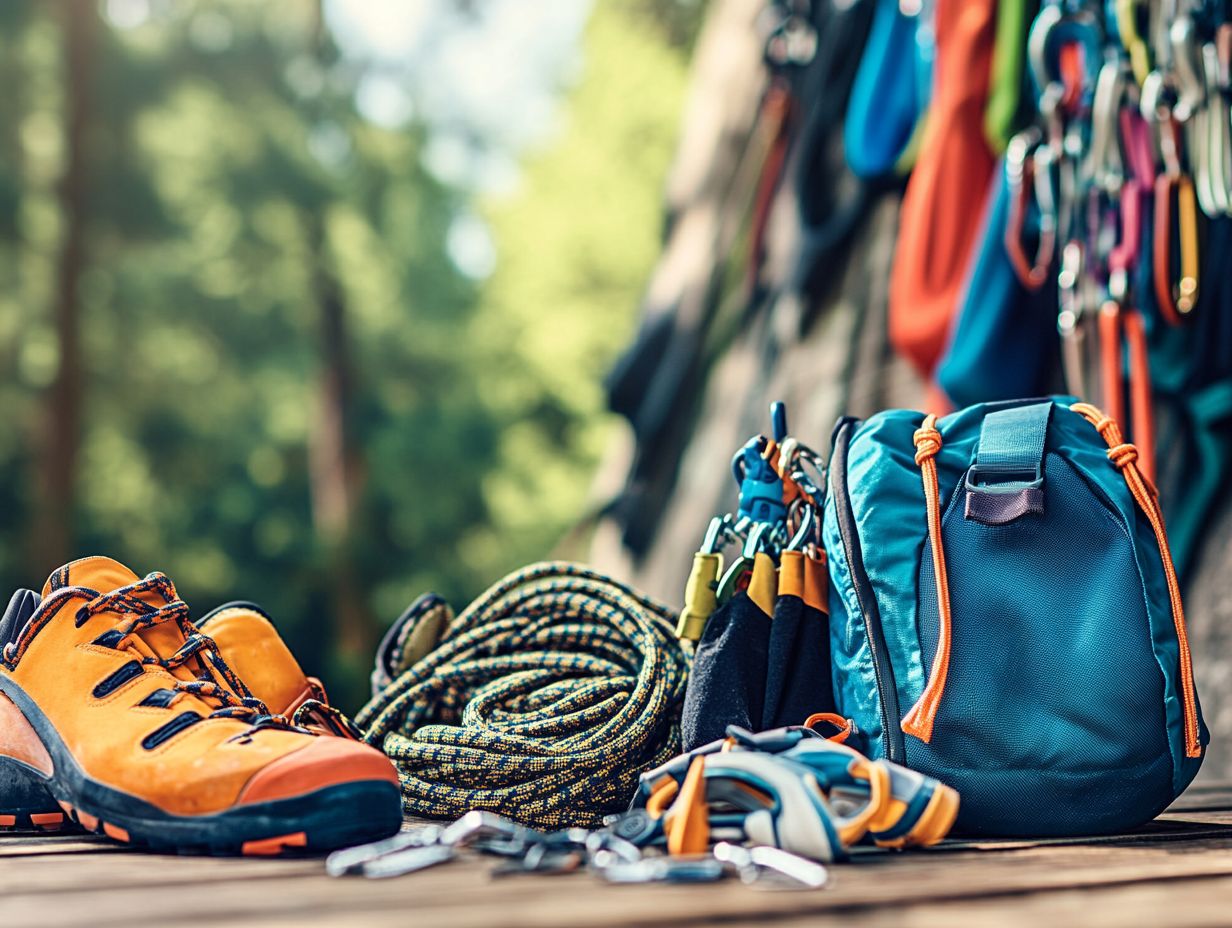
Mountaineering gear is a must-have as you tackle high-altitude terrains filled with ice, snow, and rocky surfaces. Key equipment like crampons (spiked devices worn on boots for traction), ice axes (tools used for climbing or walking on ice), and climbing ropes for secure ascents are non-negotiable.
Choosing the right clothing and protective gear is vital for enduring harsh weather conditions. By understanding the specific requirements for mountaineering, you set yourself up to face the unique challenges of this demanding sport.
Also, include items like harnesses, helmets, and climbing boots in your kit, as they play critical roles in enhancing your safety and mobility. A well-fitted harness keeps you secure and allows for efficient movement during climbs. Weather can change in an instant, so having insulated layers on hand is your best defense against frostbite and hypothermia.
Navigating variable terrain presents its own hazards; gear like headlamps and maps will be invaluable for maintaining your orientation when visibility dips. High-quality equipment helps reduce risks and boosts your confidence, allowing you to focus solely on your ascent.
Considerations When Choosing Climbing Gear
Selecting the right climbing gear demands your attention to safety, comfort, and performance, all crucial for a truly enjoyable climbing experience. Consider factors such as the type of climbing you ll be tackling, the unique challenges of your environment, and your personal preferences.
Opting for reputable brands like Patagonia and La Sportiva adds an extra layer of assurance, guaranteeing quality and reliability in your equipment. By carefully assessing your specific needs, you empower yourself to make informed decisions about the gear that will best support your climbing adventures.
Factors to Keep in Mind
When selecting your climbing gear, it s crucial to consider several factors that ensure your safety, comfort, and optimal performance. The environmental conditions think temperature and terrain type greatly influence the gear you ll need. The weight, fit, and ease of use of your gear significantly impact your performance and enjoyment on the climb.
By taking the time to assess these elements, you’ll be well-equipped to make the right choices tailored to your specific climbing activities.
For instance, when you’re tackling icy terrains, it s wise to choose specialized ice tools and crampons designed to handle frigid temperatures effectively. During warmer conditions, breathable fabrics are essential to enhance your comfort and minimize perspiration.
Don t underestimate the importance of footwear either. Robust hiking boots serve you well on rocky paths, while lighter climbing shoes provide the superior grip you need on vertical surfaces. Understanding the expected weather conditions empowers you to select gear with suitable insulation or waterproofing, ensuring you remain safe and secure no matter the challenges you encounter during your ascent.
Frequently Asked Questions
In this section, we address common questions about climbing gear to help you understand your options better.
What Are the Different Types of Climbing Gear?
Climbing gear refers to the equipment and tools used for safe and efficient climbing. There are various types of climbing gear available, including ropes, harnesses, helmets, and more.
What is a climbing rope and what are its different types?
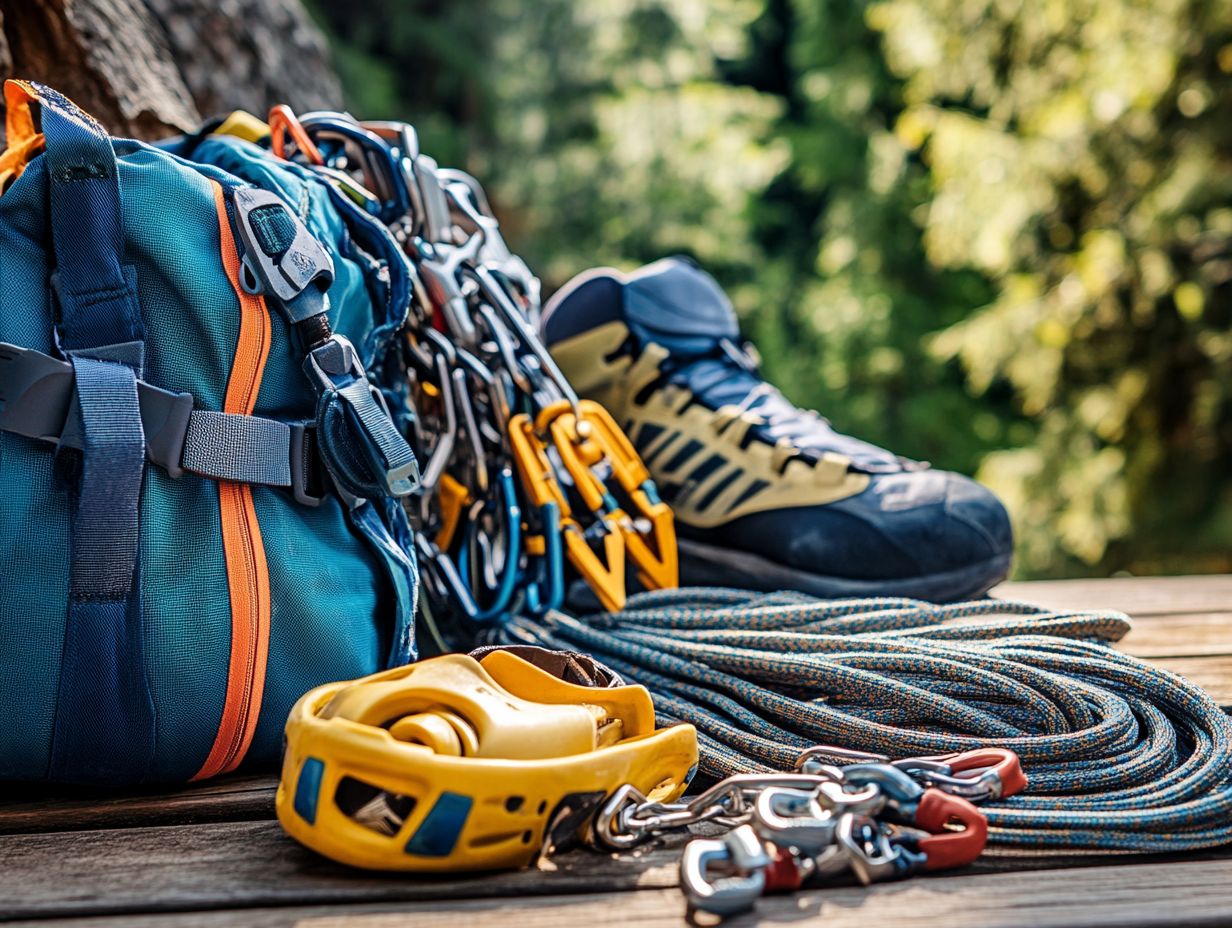
A climbing rope is an essential piece of gear that keeps climbers safe during their ascent. There are two main types of climbing ropes: dynamic ropes, which stretch to absorb falls, and static ropes, which do not stretch and are used for hauling and rappelling.
What is a climbing harness and how do I choose the right one?
A climbing harness consists of a waist belt and leg loops used to secure a climber to the rope. Choosing the right harness makes all the difference in your climbing experience! Factors to consider include your climbing style, body type, and intended use.
Why is a helmet important for climbing?
A helmet is essential for protecting your head from falling debris or impact during a climb. Choose a helmet that fits well and provides adequate coverage. Climbing helmets come in various types, including hardshell and foam, and are designed for different types of climbing.
What Are Quickdraws? Discover Their Purpose and Use!
Quickdraws are used to connect the climbing rope to bolts or other anchors on the rock. They consist of two carabiners connected by a short piece of webbing and come in various lengths. Quickdraws are essential gear for sport climbing and clip-up routes.
What Are the Different Types of Climbing Shoes?
Climbing shoes are specially designed footwear that provide traction and support on the rock. There are three main types: neutral, moderate, and aggressive. The type of climbing shoe you choose will depend on your climbing style and personal preference.
What Other Gear Do I Need for Climbing?
In addition to ropes, harnesses, helmets, quickdraws, and climbing shoes, other gear may be necessary depending on your climbing type. This includes a chalk bag, belay device, protection (like nuts and cams), and a climbing pack to carry all your gear. Always pack and use the appropriate gear to ensure safety and success.
If you have more questions or want to share your climbing experiences, feel free to explore more resources or join our community!

